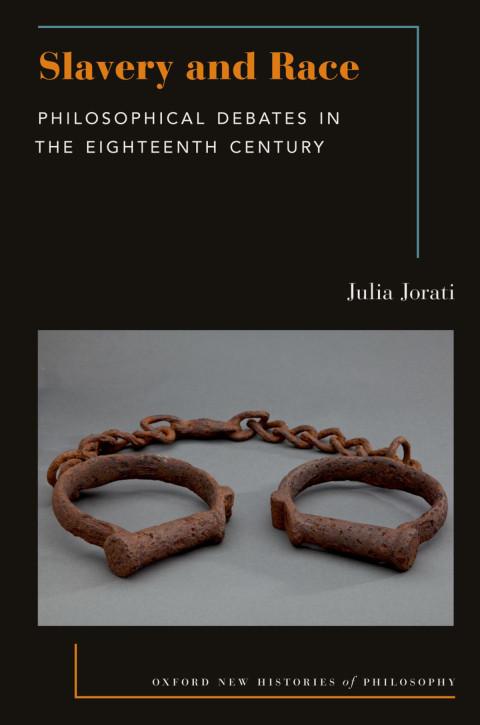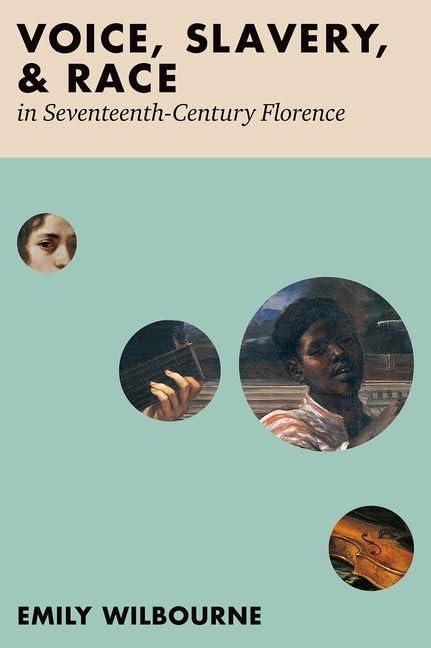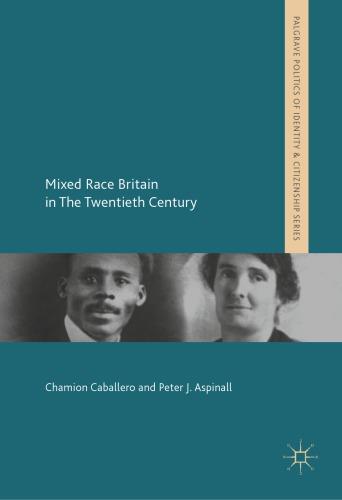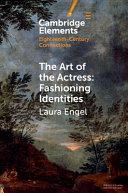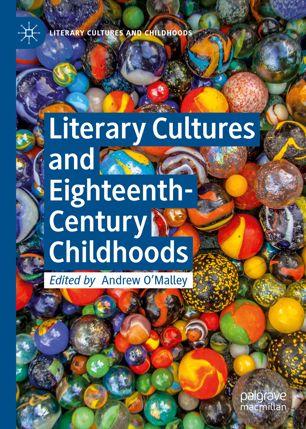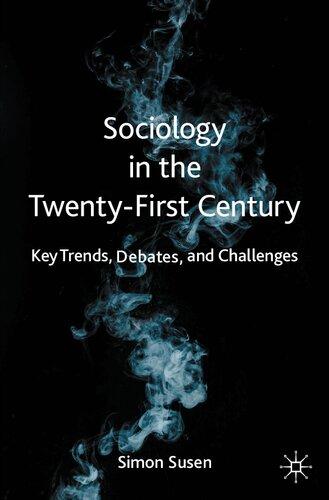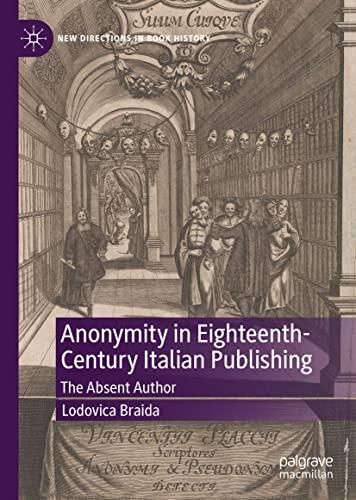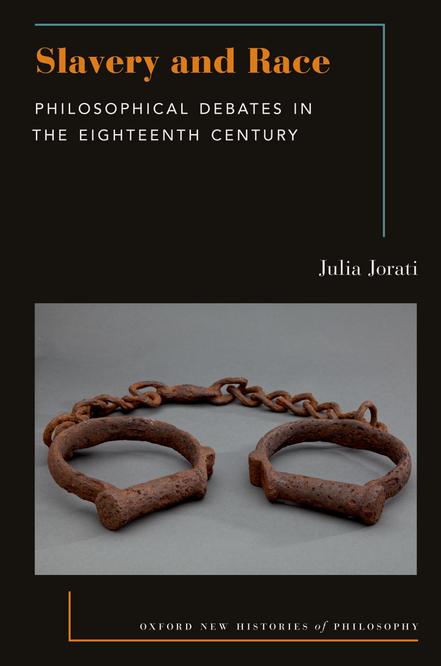Introduction
Afro-British abolitionist and formerly enslaved man Quobna Ottobah Cugoano tells us in his 1787 book that some proponents of slavery believe that “the stealing, kidnapping, enslaving, persecuting or killing a black man, is . . . less criminal, than the same evil treatment of [some] other man of another complexion” (1999: 34). He reports that this double standard, though clearly unjustifiable, is widely accepted. Elsewhere in the book, Cugoano describes the attitudes he often encounters as a free Black man in England as follows:
it cannot but be very discouraging to a man of my complexion . . . to meet with the evil aspersions of some men, who say . . . [t]hat an African is not entitled to any competent degree of knowledge, or capable of imbibing any sentiments of probity; and that nature designed him for some inferior link in the chain, fitted only to be a slave. (1999: 11–12)
In short, Cugoano tells us that some of his White contemporaries view Black people as naturally inferior in intellect and moral character, which in turn they use to defend transatlantic slavery. They also believe that Black people lack at least some of the moral rights that White people have and are fit only for slavery. Other Black authors in the eighteenth century describe their experiences of racism in very similar ways. Take, for instance, Absalom Jones and Richard Allen, two prominent African American theologians and leaders of the free Black community in Philadelphia who—like Cugoano— were formerly enslaved. In a 1794 pamphlet, they report that White people “stigmatize us as men, whose baseness is incurable, and who may therefore be held in a state of servitude, that a merciful man would not doom a beast to” (1794: 23).1
1 We will discuss Cugoano, Jones, and Allen in more detail in chapters 1–2, and we will also examine several other descriptions of racist attitudes.
Slavery and Race. Julia Jorati, Oxford University Press. © Oxford University Press 2024. DOI: 10.1093/oso/9780197659236.003.0001
These eloquent descriptions of racist attitudes are a perfect starting point for an exploration of connections between slavery and race in the eighteenth century—which is precisely what my books aims to do. More specifically, this book aims to investigate the philosophical ideas, theories, and arguments that occur in eighteenth-century debates about slavery, with a particular focus on the role that race plays in these debates. We will see that while some authors theorize about slavery without mentioning race explicitly, the racist attitudes that Cugoano, Jones, and Allen describe are central to large portions of these debates. Many defenders of the transatlantic slave trade employ the idea that Black people are naturally suited for slavery, and many opponents of slavery refute it. Some authors, along similar lines, attempt to defend slavery by contending that Black people are better off in slavery due to their allegedly inferior capacities or due to the purportedly terrible living conditions in Africa. Some proponents of slavery endorse the moral double standard that Cugoano describes: they view Black people as having an inferior moral status—as subpersons. We will also see, however, that these racist attitudes are not limited to proslavery authors. Many opponents of slavery share at least some of these attitudes.
By investigating the role that race plays in eighteenth-century debates about slavery, this book aims to serve as a resource for scholars, instructors, and students of philosophy. Most of the primary sources that this book explores are rarely taught or studied in philosophy departments. This unfortunate neglect has a variety of causes. One cause is that many of us are simply unfamiliar with these sources, in part because there is a dearth of literature about this material written specifically for scholars and students of philosophy. Even though scholars in other disciplines have published more extensively about these debates, they do not typically focus on the aspects that are most significant philosophically and often use methodologies that are unfamiliar to historians of philosophy. My book is written specifically for scholars, instructors, and students of philosophy and neighboring disciplines who are interested in this material and are looking to gain a better understanding of the relevant debates. I aim to introduce readers to many philosophically important texts about slavery from the eighteenth century, explore some interpretive questions about these texts, and point readers to further resources. I hope to illustrate that early modern discussions about slavery and its connections to race are an important part of the history of philosophy and deserve far more attention in our research and teaching.
I.1. Thematic Focus
This book is regrettably narrow in some respects and ludicrously broad in others. It is narrow because it is not about the history of slavery in general; it concentrates on one small aspect of this history: philosophical ideas, theories, and arguments about the moral permissibility of slavery and its relation to race. Early modern debates about slavery have many other important aspects that this book will ignore almost entirely. For instance, there are extensive discussions of legal, economic, and scriptural reasons for and against transatlantic slavery. Even within my focus area, I had to make many difficult choices about which authors and texts to include because there are simply too many. In one respect, then, the book’s project is narrow. Yet it is extremely broad in other ways: it covers a huge number of texts written in English, French, Latin, and German in several European countries and parts of North America across an entire century, by authors of many different backgrounds. We will examine texts from a great variety of genres, including treatises, essays, dialogues, letters, sermons, poems, novels, plays, autobiographies, book reviews, pamphlets, petitions, and legal texts. Casting such a wide net will allow us to investigate a far larger range of perspectives and hence a greater breadth of philosophical ideas about slavery. I hope that the book strikes a balance between breadth and depth that allows readers to see the big picture and makes it easy to dive more deeply into specific aspects of the debate on their own.
Our whirlwind tour of eighteenth-century debates will take us to North America (chapter 1), Scotland (chapter 2), England (chapter 3), France (chapter 4), and Germany and the Netherlands (chapter 5). The tour could easily be expanded to include other stops. Unfortunately, space constraints, my linguistic limitations, and the types of primary texts that I was able to access forced me to limit myself to these six locations. By organizing my book geographically, I do not mean to suggest that these debates were selfcontained. We will see, in fact, that the authors from these six locations were often familiar with each other’s works and sometimes knew each other personally. Antislavery networks in Britain, America, and France were particularly closely connected. The reason I decided to separate the debates geographically is simply that other ways of organizing the material seemed even less helpful. Moreover, the political, social, legal, theological, and economic contexts—and to some extent the intellectual or philosophical
contexts—in these places are different, which is sometimes relevant for understanding the argumentation.
Two other limitations of my project are important to mention here. First, I am writing this book as a White woman who grew up in Germany. I have gained some awareness of the legacy of racial slavery since immigrating to the United States, but there is still a lot that I do not understand, and I do not have firsthand experience of the ways in which racism affects people of color. This perspective has inevitably shaped my book in many respects. In addition, I am limited methodologically by my academic training, which is mainly in the history of early modern philosophy and so-called analytic philosophy. While I have some background in religious studies and literature as well, I have no formal training in history, philosophy of race, African American studies, political science, or many other relevant fields. I have tried to fill some of these gaps, but many remain.
A potential worry about the book’s thematic focus is that it might be problematic to concentrate on philosophical ideas and arguments about slavery and race, for at least three reasons. One reason is that it may be wrong—and perhaps naive—to think that arguments, or philosophical ideas more generally, had a major impact on transatlantic slavery or its abolition. Arguably, philosophical ideas about slavery and race were not the reasons why Europeans started the transatlantic slave trade; rather, these ideas were developed after the fact, to defend an existing institution that was enormously lucrative. As Ibram X. Kendi argues, racist ideas are simply “the public relations arm” of racist institutions (2016: 509); they do not bring these institutions into existence. Likewise, the reason that transatlantic slavery was eventually abolished is arguably not that people were suddenly convinced by philosophical arguments against slavery. Rather, it was presumably due to political and economic factors. A related reason to worry about the book’s focus is that instead of exploring ideas and theories about slavery and race, it may seem far more important to examine systemic racism—for instance, by investigating the legal frameworks behind transatlantic slavery—as well as the experiences and material conditions of enslaved people. A third and final reason to worry about the book’s focus is that it may seem morally wrong to take the arguments for and against slavery seriously, since this may seem to suggest that the moral permissibility of slavery is genuinely up for debate. Or, at least, it may seem insensitive to dissect these arguments dispassionately as if they were mere theoretical curiosities.
These are serious worries; let me briefly respond. First, my book is not meant to suggest that philosophical ideas had important effects on transatlantic slavery or its abolition. Indeed, I do not aim to address the question of what caused the beginning, growth, and decline of transatlantic slavery. While that is an excellent question, I am interested in a completely different question: how did people in the eighteenth century theorize about slavery, and what role did race play in these theories? This question is important even if these theories had little or no direct impact on the transatlantic slave trade. After all, understanding the history of racist ideas is necessary—though not sufficient—for understanding racism more generally. The eighteenth century is particularly important for this history because many aspects of modern racial and racist thinking originated in this period.2
Investigating eighteenth-century ideas about slavery and race is also important for gaining a more accurate understanding of early modern philosophy. These ideas are historically important in their own right, and they are also intimately connected to other central philosophical debates. Indeed, many early modern theories about topics other than slavery—such as property rights, self-ownership, liberty, gender, war, human nature, and so on— are shaped by their authors’ attitudes toward slavery and race.
Moreover, even if these ideas did not have large-scale effects on the transatlantic slave trade, they did have tangible effects on the lives of Black people in the early modern period. We already encountered testimony by Cugoano, Jones, and Allen about the negative impact that the racist attitudes of their contemporaries have had on them. Cugoano reports, for instance, how discouraging it is to be viewed and treated as inferior on a daily basis. He also notes later in his book that racist attitudes can make Black people physically unsafe: “the European seafaring people in general, who trade to foreign parts, have such a prejudice against Black People, that they use them more like asses than men, so that a Black Man is scarcely ever safe among them” (1999: 106). Other Black authors in the eighteenth century—along with some White authors—describe racism and its effects in very similar ways, as we will see in this book. These authors found it important to reflect on the nature of racist ideas and they attempted to fight slavery and racism through philosophical
2 I am, of course, not the first to examine the history of racist ideas with a focus on the early modern period; other authors who have done this include Charles Mills (1997; 2005; 2006; 2014), Ibram X. Kendi (2016), and John Harfouch (2018).
argumentation. Whether these attempts were successful or not, they deserve a place in the history of philosophy.
Regarding the worry that it is morally wrong to take the arguments for and against slavery seriously, I think it matters how and why one examines these arguments. As historians of philosophy, we often investigate historical debates about a certain philosophical question in order to make progress on finding the correct answer to this question. For instance, we may study early modern discussions of the mind-body problem in order to come closer to solving this problem. Yet this is not what I aim to do in this book. It is not my goal to determine whether there is anything wrong with slavery and racist ideas, because there obviously is. Rather, I investigate these arguments simply because I find it important to understand how early modern authors thought about slavery and race. This is in part because as a historian of philosophy I want to understand central aspects of historical worldviews and their interconnections and in part because early modern ideas about slavery and race have shaped racial thinking ever since. I will try not to lose sight of the horrors of transatlantic slavery while discussing these ideas, and I will foreground texts by Black authors wherever possible.
I.2. Background and Terminology for Discussing Slavery
Before embarking on our tour of eighteenth-century debates about slavery, it will be helpful to survey the historical and theoretical background to these debates and clarify some important terminology. Let us start with the term ‘slavery’ itself, which can mean a variety of different things. Early modern authors sometimes use this term and corresponding terms in other languages in extremely broad ways—not only for the type of colonial chattel slavery that we associate with it today, but also for many other forms of subordination. These include not just various types of unfree labor, such as serfdom and other forms of feudalism, but also the subjection of citizens to a tyrannical monarch, the subjection of women to their husbands, the subjection of human reason to the passions, and the subjection of human souls to sin. Some authors draw careful distinctions between different kinds of unfree labor, for instance by distinguishing between slaves and servants, or slavery and servitude, while others place a broad range of subordination relations into one category. Accordingly, we find many different definitions of slavery in early modern texts. For example, some definitions insist that slavery must
be involuntary on the part of the enslaved person, or that it must constitute a permanent and absolute subordination, or that it must be hereditary, or that the subordinated person must have the same legal status as chattel. Other definitions do not include these necessary conditions. Some authors use the term ‘slavery’ for any form of despotic rule, that is, for any type of rule that is exercised for the sake of the ruler’s interests, using the ruled as mere instruments for the ruler’s ends. This is how Aristotle defined despotic rule, and the rule of masters over their slaves is his central example. Despotic rule differs from what is typically called paternal rule, which is practiced for the sake of the ruled, and from good political rule, which is practiced for the common interest. Despotic rule benefits the ruled at best accidentally (Aristotle, Politics iii.6, 1984: 2029–30). This Aristotelian definition explains why early modern texts often use the term ‘slavery’ for the subordination of citizens to a despotic monarch and for the subordination of women to a tyrannical husband.
To navigate this conceptual maze, I find it most useful to treat ‘slavery’ as a cluster concept. In other words, instead of trying to find a definition that captures all and only the types of subordination that are relevant to this project, I will specify a paradigmatic type of slavery and then examine forms of subordination that bear a sufficient resemblance to this paradigm. The paradigm that is most relevant to this project is, of course, racial chattel slavery, and more specifically, the enslavement of Black people in European colonies in the United States and elsewhere in the New World in the eighteenth century.3 I will typically refer to this type of slavery as ‘transatlantic slavery.’4 While transatlantic slavery in the eighteenth century was not completely uniform, this paradigm is specific enough to serve as a useful guide. Many of the texts we will examine in this book discuss this type of slavery directly. Yet I also include some texts that discuss broader or slightly different forms of subordination, since such discussions can be helpful for understanding early modern attitudes toward transatlantic slavery. Wherever relevant and possible, I will specify how a particular author defines slavery, or which forms of subordination the author examines.
3 This is not the only form of slavery that was practiced in European colonies. For instance, colonists also enslaved American Indians. Yet my main focus will be on the enslavement of Black people.
4 Some scholars use the terms ‘African slavery’ or ‘Black slavery,’ but I avoid these terms because they can also refer to slavery practices within Africa.
There are a few theoretical frameworks that are particularly important for early modern debates about slavery. Authors who defend transatlantic slavery often claim that it is an instance of one or more forms of slavery that are traditionally viewed as licit. Before examining these traditional justifications, let us briefly note a few other common proslavery strategies. The White English poet Anna Seward (1742–1809) is a helpful source of several such strategies. In a letter to the White English abolitionist Josiah Wedgwood—written in February 1788, only a few months after Cugoano published his antislavery book—Seward admits that she used to oppose abolition but that the arguments contained in Wedgwood’s previous letter changed her mind.5 What is most interesting for our purposes is her detailed description of her earlier proslavery views and the reasons why she held them. This description includes a long list of common eighteenth-century defenses of slavery. For her, interestingly, these defenses did not amount to full moral justifications, since she viewed transatlantic slavery as unjust but necessary, and abolitionist efforts as “fruitless and dangerous, though just and humane” ([1788] 1811: 30). Other authors, however, took these types of defenses to be providing moral justifications for slavery.
One of Seward’s past reasons for viewing transatlantic slavery as a necessary evil was economic: “the purchase, employment, and strict discipline of the negroes [is] absolutely necessary to maintain [England’s] empire, and our commerce, in the Indies” (1811: 29). Thus, she used to oppose abolition in part because she worried that it would have devastating economic consequences for England. Economic considerations played a massive role in eighteenth-century debates about slavery—as one would expect, since transatlantic slavery constituted a large segment of the economies of Britain, France, the Netherlands, and the United States.6 As we will see in this book, some antislavery authors argued that economic considerations are irrelevant because abolition is morally required regardless of its costs. Yet many antislavery authors used a different strategy, insisting that abolition would not have devastating economic effects. Some—including most famously Adam
5 I was unable to determine whether Wedgwood’s letter to Seward has come down to us. Wedgwood was a prominent abolitionist, one of whose main contributions to abolitionism was the well-known antislavery medallion “Am I Not a Man and a Brother?” Incidentally, Wedgwood’s daughter Susannah, whose married name was Darwin, was the mother of the famous biologist Charles Darwin.
6 For more on the role of economic considerations in proslavery thought, see Drescher 1986.
Smith—even argued that abolition would have positive economic effects for Europe.7
Seward additionally tells Wedgwood that her initial horror at reports about the cruel treatment of colonial slaves was offset by arguments that “negroes . . . [are] of a nature so sordid and insensible, as to render necessary a considerable degree of severity” (1811: 29) and that their temper is “treacherous, ungrateful, and bloody” (1811: 30). She also claims to have heard about cases in which masters who treated their slaves humanely were brutally killed by these slaves, which in her mind supported the claim that severity is necessary (1811: 29–30). In addition, proslavery acquaintances assured her that many reports about the cruelty of masters and overseers are either false or at least “infinitely exaggerated” (1811: 29). This has to be the case, she reasoned, since it would be contrary to the economic self-interest of slaveowners to treat their valuable human property so barbarously (1811: 29). And finally, she believed that “in some countries, the subjection of beings, that form the latest link in the chain descending from human to brute animality, was an evil inevitable” (1811: 30). This last consideration is a version of natural slavery, which is among the traditional justifications that we will examine in more detail soon. Natural slavery is the doctrine that it is permissible to enslave individuals or groups who are naturally inferior in specific ways. Seward, like Cugoano, connects this doctrine with the idea of a Great Chain of Being, or a hierarchical ordering of all created things, in which Black people were often thought to occupy a lower rank than White people.
At least two other common defenses of transatlantic slavery are missing from Seward’s list. One is the claim that transatlantic slavery is justified because it saves countless souls. After all, according to this justification, many enslaved Black people convert to Christianity, and they would not have converted if they or their ancestors had remained in Africa. Another common defense is that the situation in Africa is so horrific that forcing Africans to live in “civilized” countries—even in slavery—benefits them. Some proslavery authors even go so far as to say that Black people are happier in colonial slavery than they would be in Africa.8 These defenses are paternalist arguments, since they view it as permissible to force people into ways of life that are allegedly in their best interest.
7 Unfortunately, while these economic debates are important, I will not be able to examine them in detail in this book.
8 Eliphalet Pearson, whom we will discuss in chapter 1, endorses both these arguments (Parsons and Pearson 1773: 24–31).
Many defenders of transatlantic slavery invoke reasons like the ones just seen, and many opponents of slavery counter these types of arguments. However, authors on both sides of the debate frequently appeal to broader theoretical frameworks as well. These frameworks are general theories about what—if anything—can make it morally permissible to enslave a human being. The two most important sources of such theoretical frameworks are Christian theology and natural law ethics. These two frameworks overlap, but there are some purported theological justifications for slavery that draw directly on the Bible, rather than on natural law. The idea behind these justifications is that if the Bible commands or permits the enslavement of certain individuals or groups, then it is justified.
Natural law ethics has its roots in antiquity and developed many different branches during its long history. One idea that unites the various branches is a commitment to moral principles that are grounded in human nature. These principles are the ‘natural laws’ or the ‘laws of nature.’ In the Christian natural law tradition, these laws are part of God’s plan for creation, but we can know them without reference to special divine revelation, simply through reasoning and examining human nature (Murphy 2019: §1.4). In other words, natural lawyers hold that we can deduce the moral laws that apply to human beings from an accurate understanding of human nature.
Proponents of natural law ethics can take surprisingly different positions on slavery. We can distinguish two broad branches of this tradition. According to one branch, a study of human nature reveals significant differences among individuals that make it natural for some human beings to be free and for others to be enslaved. This branch views human beings as naturally unequal. The other branch denies that there are significant natural differences and insists that it is the natural state of all human beings to be free and equal. Consequently, they argue, no human being is a slave by nature. In the eighteenth century, proponents of this second branch of natural law often argue that all humans possess certain natural rights, such as the right to life and liberty.
The natural law doctrine that all human beings are naturally free and equal, or have certain natural rights, has powerful potential for the abolitionist cause.9 Many of the antislavery authors whom we will encounter in this book use this doctrine to argue against the moral permissibility of transatlantic slavery. It is important to note, however, that not all natural law theorists in
9 For some of the features that make this doctrine particularly useful for the abolitionist cause, see Mills 1998: 174.
this period view this doctrine as applying to literally everyone. As Charles Mills convincingly argues, many authors implicitly restrict full moral personhood, and hence full natural rights, to Europeans or White people—or more specifically, to White men. According to Mills, these authors use a racist framework in which “non-Europeans are generally seen not as persons but as ‘savages’ and ‘barbarians’ ” (Mills 2005: 171). In short, some natural lawyers do not appear to view these principles as truly universal. As we will see, several antislavery authors criticize their contemporaries for implicitly restricting these rights to White people. They argue that in order to be consistent, White people who claim to champion these rights must extend them to everyone. If Mills’s interpretation is correct, this is an example of how moral principles from originally racist frameworks can be appropriated for antiracist projects.
It is also important to note that a commitment to the natural equality or natural liberty of all human beings is compatible with the doctrine that there are morally permissible forms of slavery. Most natural lawyers in this branch of the tradition hold that human conventions, circumstances, and actions can in principle justify enslavement. For instance, it is common to argue that people can licitly lose (or forfeit) their natural right to liberty through specific actions and circumstances, or that they can voluntarily give it up, selling (or alienating) it. While nature makes humans free and equal, specific circumstances and actions can make them unfree and unequal.
Figure I.1 captures the theoretical frameworks that are most important for eighteenth-century debates about slavery. Going from left to right, the first branching represents three major types of alleged justifications for slavery: the idea that enslavement can be justified by specific circumstances or actions, the idea that it can be justified by natural characteristics of the individuals or groups who are to be enslaved, and the idea that it can be justified through God, that is, through divine permission or divine intentions. I will refer to the first branch as ‘circumstantial slavery’ and the second as ‘natural slavery.’
Circumstantial slavery has several subtypes, which are unified by the basic idea that specific actions or circumstances—rather than natural characteristics—justify slavery. It views slavery as resulting from bad luck or bad choices and as something that can in principle affect anyone. The most common types of circumstantial slavery are presented in the figure: (a) voluntary slavery, or the doctrine that individuals can sell themselves into slavery, typically because they are destitute, (b) slavery through parental sale, or the doctrine that parents have the right to sell their children into slavery,
Licit origins of slavery
Circumstances or actions
Need
Voluntary slavery
Parental
Nature
God
Debt
Parental status
Individual characteristics
Racial characteristics
Penal slavery
Debt slavery
Hereditary slavery
Natural slavery
Racial natural slavery
Indirect revelation eological natural slavery
Direct revelation
Biblically sanctioned slavery
for instance when they have no other way to support their children, (c) war slavery, or the doctrine that it is permissible to enslave captured enemy soldiers in a war in lieu of killing them, (d) penal slavery, or the doctrine that it is permissible to enslave criminals as a just punishment for their crimes, (e) debt slavery, or the doctrine that it is permissible to enslave a debtor who cannot pay off their debt in another way, and finally (f) hereditary slavery, or the doctrine that children born to enslaved parents are automatically enslaved as well.10 Practically everyone until the mid-eighteenth century
10 Hereditary slavery is a type of circumstantial slavery because it is based not on the natural characteristics of the child, but simply on the circumstances into which the child is born. Some authors subsume this type under one of the other types, most commonly under debt slavery. The idea is that if the parents are enslaved and hence do not own resources to raise their children, these children
Figure I.1 Theories about the Licit Origins of Slavery
accepted at least one type of circumstantial slavery.11 Yet some types started becoming controversial in the late seventeenth century, and beginning in the mid-eighteenth century, there were authors who rejected all types. We will see examples of such rejections in this book.
Some proslavery authors attempted to justify transatlantic slavery by arguing that it is a licit instance of at least one type of circumstantial slavery. The two most common such defenses are that the enslaved Black people purchased by European traders in West Africa were originally enslaved as prisoners of war in inter-African conflicts or as penal slaves.12 That would make transatlantic slavery licit, in this theoretical framework, because it was traditionally thought that the rightful owner of an enslaved person has the right to sell this person to someone else. Some authors even claim that transatlantic slavery saves the lives of the people it enslaves since in the absence of European buyers, African governments would execute their prisoners and war captives.13 There are also proslavery writers who claim that some transatlantic slaves were sold into slavery by their parents.14 Proponents of these justifications typically also accept hereditary slavery and hence contend that the descendants of licit slaves automatically have the same status as their parents. In response to these arguments, antislavery authors have two options: they can reject the moral legitimacy of the various forms of circumstantial slavery, or they can argue that transatlantic slavery is not an instance of them. We will see many examples of both strategies in this book.
Natural slavery, as mentioned earlier, is the doctrine that some human beings possess natural characteristics—which could be physiological or mental—that mark them out for slavery. According to this doctrine, it is fitting or permissible to enslave people who possess these characteristics, independently of anything they have done and independently of their
depend on the master for sustenance during infancy. This means that they are indebted to the master and must work to pay off this debt once they are old enough.
11 The only exceptions of which I am aware are some proponents of natural slavery who reject circumstantial slavery categorically because they hold that only natural slaves ought to be enslaved (e.g., Felden 1664: 3). I am not aware of any authors before the mid-eighteenth century who categorically reject both natural and circumstantial slavery.
12 See, for instance, Bosman 1705: 364; Thompson 1772: 25–26; Long 1774: 388–89 and 394–95; Romans 1776: 108; Turnbull 1786: 11. For a helpful discussion of the role of war slavery in debates about the legitimacy of transatlantic slavery, see Glover 2017.
13 See, for instance, Turnbull 1786: 10–11; Snelgrave 1734: 160–61; Beckford 1788: 60; Long 1774: 389; Parsons and Pearson 1773: 30–31.
14 See, for instance, Long 1774: 388. We will see several other instances of this argument later, particularly in chapter 4.
circumstances. The idea goes back at least to Aristotle, who argues that there are human beings who lack the cognitive abilities required for life as a free person and who are therefore natural slaves, while others are natural masters (Politics i.5, 1984: 1990–91; i.13, 1984: 1999). He even claims that at least some “barbarian” nations are generally natural slaves and that this makes it permissible to wage war against these nations and enslave them (Politics i.2, 1984: 1987; i.7, 1984: 1992). While Aristotle’s notion of “barbarians” is arguably not racial in a modern sense, there are many clear instances of racialized versions of the doctrine of natural slavery in the early modern period. Most relevantly, some early modern authors argued that all Black people—or all Black people from certain ethnic groups—are natural slaves because they possess racial traits that mark them out for slavery. One example is the White proslavery author Bernard Romans, who writes in 1776 that Black people are naturally inferior to White people (1776: 105) and that they are a “naturally subjected species of mankind” (1776: 107). This was also a common way to defend slavery in nineteenth-century antebellum America.15 I will refer to this combination of natural slavery and racist ideas—or the doctrine that some racialized groups are natural slaves—as ‘racial natural slavery.’
Racial natural slavery is enormously important for this book because it is the most direct way to employ race as a justification for enslavement. We have already seen references to this idea in Cugoano and Seward, and less directly in Jones and Allen. Nearly all the authors in this book discuss some version of racial natural slavery. It is one of the central aims of my book to show that this doctrine played a crucial role in eighteenth-century debates about slavery.
The observation that racial natural slavery is an important component of early modern proslavery discourse is far from new. Charles Mills, for instance, argues that the doctrine of racial natural slavery played an important role in modern racism (2021: 488–89), including Kant’s racism (2014: 146). Indeed, there are some early modern authors who make this
15 One of the most explicit versions occurs in the infamous 1861 Cornerstone Speech by Alexander H. Stephens, a White American politician and vice president of the Confederacy. Stephens claimed that the cornerstone of the Confederate States was “the great truth, that the negro is not equal to the white man; that slavery—subordination to the superior race—is his natural and normal condition” (1866: 721). Later, he contends that American slavery is in accordance with the natural law because “Subordination is [the negro’s] place. He, by nature . . . is fitted for that condition which he occupies in our system” (1866: 722–23). See also George Frederick Holmes, who devotes an entire essay to this topic and discusses Aristotle’s formulation of the doctrine in depth (Holmes 1850). For more proslavery arguments from the nineteenth century that rely on racial natural slavery, see Elliott 1860. For a discussion of these arguments, see Monoson 2011; Campbell 1974.
point—including Cugoano, as already seen. A particularly explicit example is the White New Jersey Quaker David Cooper, who writes in a 1772 pamphlet that the custom of enslaving Black people “casts the most indelible odium on the whole people, occasioning some from hence to infer that they are a different race, formed by the Creator for brutal services” (1772: 8). Cooper here contends—like several other early modern authors, as we will see in this book—that transatlantic slavery gave rise to racist attitudes and in particular to the racist idea that Black people are intended for slavery by God. He goes on to say that practically every proponent of transatlantic slavery adopted this doctrine, ridiculous and misguided as it is, since it is impossible to justify the institution without it: “However extravagant such a supposition may appear, it is the only rational one that can fully justify the practice, and give peace of mind to a slave-keeper; . . . and I am fully persuaded there is few to be found who justifies the practice but is more or less tinctured with this opinion” (1772: 8). About fifteen years later, the White English abolitionist Thomas Clarkson makes a similar point. He states that when proponents of transatlantic slavery encounter refutations of their other attempts to justify the institution, they unfailingly resort to racial natural slavery, that is, to the idea “that the Africans are an inferiour link of the chain of nature, and are made for slavery” (Essay 3.7/3.8, 2010: 176). This suggests that eighteenthcentury proponents of slavery routinely relied on racial natural slavery.16
The bottom branch of Figure I.1 comprises defenses of slavery that present the institution as authorized by God. Proponents of this strategy typically claim either that the Bible explicitly authorizes slavery or that we can infer this authorization from the characteristics that God has given to specific individuals or groups.17 I categorize the former as an authorization through direct revelation and the latter as an authorization through indirect revelation. The idea that God authorized one group of human beings to enslave another group by giving this second group natural characteristics that mark them out for slavery is a theological version of natural slavery. Many versions of natural slavery are theological in a broad sense, since many proponents of
16 Along similar lines, the White New England merchant Josiah Quincy Jr. reports in his 1773 journal that many people he encountered during his trip to the American South used racial natural slavery to defend the institution of slavery: “The Africans are said to be inferior in point of sense and understanding, sentiment and feeling, to the Europeans and other white nations. Hence the one infer a right to enslave the other” (Quincy 1915: 463).
17 Some authors claim that we can infer this authorization from the mere fact that God has not stepped in to stop transatlantic slavery; Jonathan Edwards Jr., whom we will examine in chapter 1, refutes this type of argument explicitly (1791: 22).
natural slavery are Christians who view the natural law as part of God’s plan. Yet I will reserve the label ‘theological natural slavery’ for something more specific. After all, it seems important to distinguish between authors who hold that certain natural characteristics directly justify someone’s enslavement and authors who hold that such characteristics justify enslavement only indirectly, by constituting evidence of divine authorization.18 Only the latter counts as theological natural slavery in my sense.
One proponent of theological natural slavery is the White Massachusetts judge and politician John Saffin (1626–1710). In a 1701 pamphlet, Saffin explicitly rejects the doctrine that all human beings are naturally free and equal (1997: 821), as well as the doctrine that Christians ought to love and respect all human beings equally (1997: 824). Instead, he argues, inequality and subordination are ordained by God. The doctrine that all human beings “have equal right to Liberty, and all outward comforts of this life,” he contends, “seems to invert the Order that God hath set in the World” (1997: 821). After all, God has clearly ordained some human beings “to be born Slaves, and so to remain during their lives” (1997: 821). Saffin does not base this on any explicit Bible passage. Rather, he appears to base this claim on a general theory of divine providence as well as the biblical command to accept one’s station in life (1997: 822). He does not state that all and only Black people are born to be slaves. Nevertheless, it is clear that he views his theory as applying most straightforwardly, or perhaps exclusively, to Black people. After all, he rejects the idea that Black people deserve the same “love, kindness, and . . . respect” as “the best of men” (1997: 824). Moreover, he ends his text with a short poem titled “The Negroes Character,” which argues that the situation of enslaved Black people is not at all parallel to the situation of the biblical Joseph—who was enslaved unjustly—because Black people are innately “Cowardly and cruel,” as well as “Libidinous, Deceitful, False and Rude” (1997: 825). Thus, Saffin appears to believe that transatlantic slavery is justified because God has ordained inequality and has marked out Black people as deserving of, and born for, slavery through their allegedly natural characteristics. This book will not discuss alleged biblical justifications for transatlantic slavery in great depth. However, two such justifications will come up a few times: the curse of Ham and the curse of Cain. Let me say a few words about
18 One reason why this distinction matters is that proponents of the latter type of theory do not need to claim that the characteristics in question have any direct or intrinsic moral relevance. Indeed, they can claim that characteristics that are morally neutral when considered in themselves—such as skin color—are a sign of God’s intentions and thus have only an indirect or extrinsic moral relevance.
these two justifications, starting with the theory that the enslavement of modern Africans is licit because they descend from the biblical Ham, who was cursed to slavery. On this theory, modern humans descend from Noah’s three sons Shem, Ham (sometimes spelled ‘Cham’), and Japheth. More specifically, it was common to claim that Asians descend from Shem, Africans from Ham, and Europeans from Japheth.19 According to Genesis, while Noah was drunk and sleeping, Ham saw him naked and told his brothers, who covered their father without looking at him (Genesis 9: 21–23).20 As punishment for Ham’s indiscretion, Noah cursed Ham’s son Canaan to be a slave to Japheth and Shem, though some early modern authors claim that it was Ham himself and all his descendants who were cursed in this way. This switch often appears to be based on circular reasoning: since Africans were thought to descend from Ham’s son Kush, rather than from Canaan, interpreters concluded that the curse could not have been limited to Canaan and his posterity (Goldenberg 2005: 177, 101). Some authors additionally claim that Black complexion was part of the punishment for Ham’s posterity. A somewhat less common theory traces slavery and Blackness back even further, to Adam’s son Cain.21 According to Genesis, Cain killed his brother Abel and as punishment was cursed to wander the earth (Genesis 4:11–12). God marked Cain in an unspecified way in order to prevent other people from killing him (Genesis 4:15). Some later interpreters claim that Cain’s mark is Black skin and that his punishment was slavery. In both biblical theories, slavery is a divinely sanctioned condition for an entire lineage of people: God ordains—or at least authorizes—the enslavement of all descendants of the original subject of the curse. The idea is that if modern Africans are descendants of these original subjects, Europeans can licitly enslave them based simply on their ancestry.
Let us take a quick look at a proponent of the curse of Ham theory from the eighteenth century: White British slave trader Gilbert Francklyn (1733–1799). In his 1789 Answer to the Rev. Mr. Clarkson’s Essay, he examines the curse in Genesis 9 and argues that it clearly applies not just to Canaan but to all of Ham’s sons—including Kush, who, according to Francklyn, was Black and the ancestor of modern Africans (letter 2, 1789: 31–32, 38). Thus, he contends, the Bible clearly asserts “that a considerable part of mankind were,
19 This idea is based on Genesis 10.
20 The history of interpretations of this story is complex and fascinating; for book-length treatments, see Haynes 2002; Whitford 2009; Goldenberg 2005; 2017.
21 For an in-depth discussion of the history of this theory, see Goldenberg 2005: 178–82.
from the earliest ages, destined to live in a state of slavery to the other part; [and] that a part of those, so destined, were descended from a black ancestor” (1789: 34). This is obviously a form of biblically sanctioned slavery.
I.3. Background and Terminology for Discussing Race and Racism
Another important preliminary question concerns the meanings of the terms ‘race’ and ‘racism.’ The term ‘race’ was sometimes used in the early modern period, but it had several different meanings—for instance, it can mean ‘lineage,’ such as in the context of discussing a royal family. To make things even more complicated, early modern authors often used terms like ‘species,’ ‘type,’ or ‘kind’ to refer to what might be the concept of race, or they used terms like ‘Black,’ ‘White,’ ‘Negro,’ ‘mulatto,’ ‘Moor,’ or ‘Ethiopian’—or terms like ‘nation,’ ‘Guinean,’ ‘African,’ ‘English,’ and ‘European’—to refer to what appear to be racial categories. In short, the early modern terminology is extremely confusing, and we need independent criteria to determine whether a particular author is discussing race. The latter also applies to the term ‘racism’: this term was not coined until the late nineteenth or early twentieth century, which means that it does not occur at all in the primary texts we will examine here. Yet, as already seen, some early modern authors describe or theorize about prejudices against Black people—like Cugoano, Jones, and Allen—and some authors express attitudes that we would categorize as racist if someone expressed them today. Thus, while the term ‘racism’ did not exist, racism itself appears to have existed.
It is, however, controversial whether the terms ‘race’ and ‘racism’ can— or should—be applied to any discussions of human diversity in the early modern period and, if so, how. There is a danger of being anachronistic, that is, of applying these terms in a way that blurs crucial differences between the ways in which early modern authors conceived of human diversity and the ways in which we do today. For instance, one might suspect that the presentday concept is so intertwined with ideas from evolutionary biology that it would be misleading to use the same term for early modern views. Or one might consider it as linked inextricably to so-called scientific racism, which is typically thought to originate in the late eighteenth century. Accordingly, some scholars argue that modern racism originated during the time of the American Revolution (Fields and Fields 2012: 121); others suggest that Kant
was the originator of modern racism.22 If that is correct, it could be misleading to apply these concepts to any early modern theory prior to the late eighteenth century.
While there is a genuine danger of anachronism, there is also the opposite danger: obscuring important patterns and continuities between early modern ideas and later ideas. These patterns and continuities are crucial for the project of this book, and, more generally, they are important for anyone studying the history of race and racism. There are clearly important connections between the attitudes that Cugoano experienced and the racist attitudes that Black people experienced in the nineteenth and twentieth centuries and still experience today. Moreover, there are important continuities between the attitudes that Cugoano describes and the attitudes described in texts from the early eighteenth century and even the late seventeenth century.23 Of course, there are also discontinuities. But whether we find specific continuities more relevant than specific discontinuities depends at least in part on our theoretical interests. What matters most for projects like mine are continuities with respect to the types of attitudes described by Cugoano.
A common justification for the thesis that one cannot find genuine instances of racial thinking or racism until the late eighteenth century is the assumption that such instances would have to be based on a well-developed theory of race. That assumption is mistaken. As Charles Mills points out— building on arguments by Audrey Smedley (1993) and David Stannard (1992)—“a concept can be in formation in popular consciousness long before its developed critical articulation by intellectuals” (Mills 2006: 223). And that appears to be the case for the concept ‘race’: it started out as a folk concept and was only theorized in systematic ways much later (Smedley 1993: 25). Even a rudimentary folk concept of race is sufficient for the formation of racist ideas. In other words, racist ideas can develop even in the absence of systematic theories of race. Since my book aims to investigate the ways in which racial or racist thinking shaped eighteenth-century debates about slavery, it is not a problem if most of the authors I examine did not endorse systematic theories of race. It is sufficient if they operated with a folk concept that is continuous in significant ways with our concept.
22 Mills discusses the history of the latter attribution in depth (2014: 130–31).
23 I explore the role of race and racism in seventeenth-century debates about slavery in Jorati, forthcoming.
